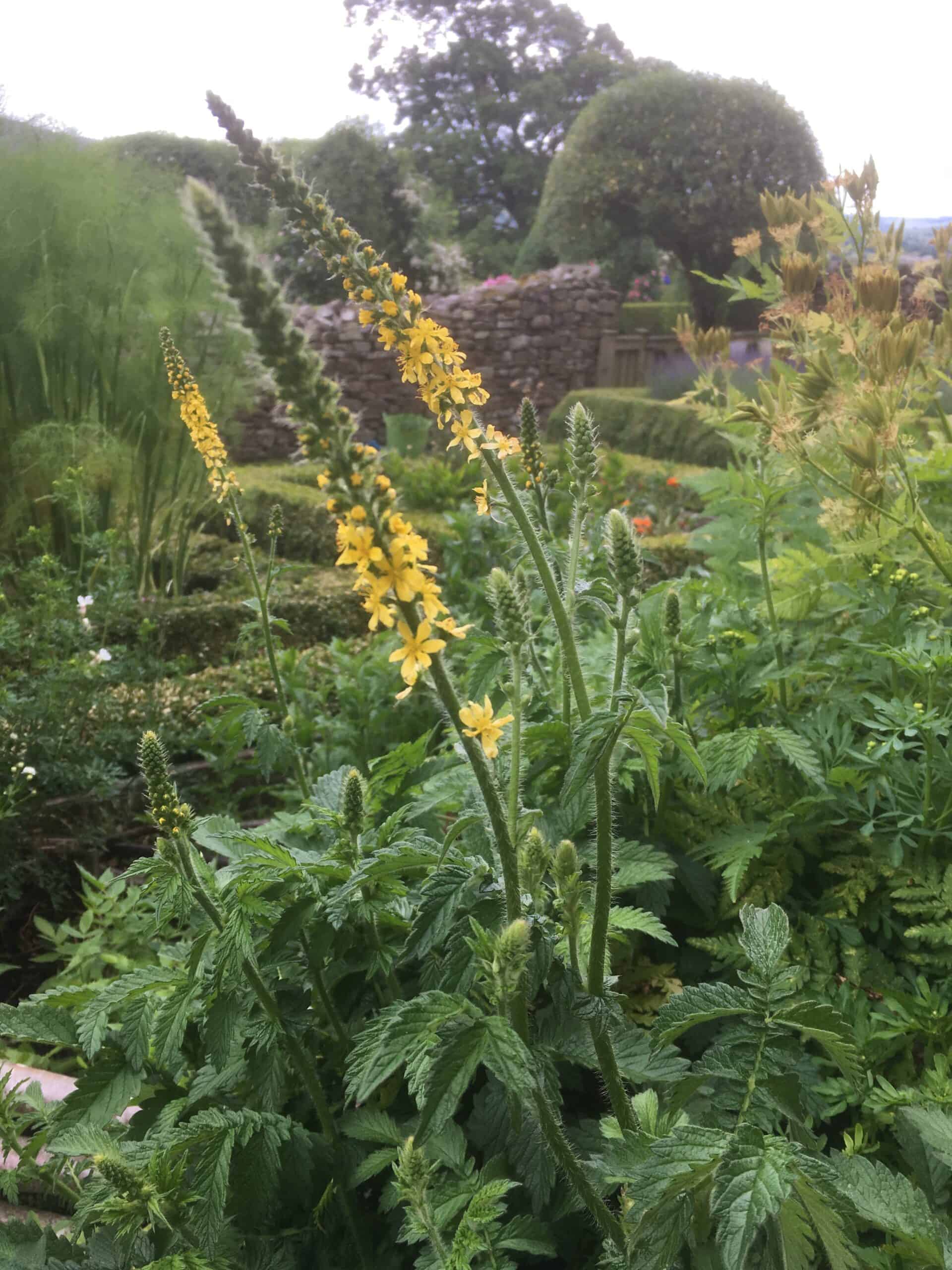Agrimony (Agrimonia eupatoria)
Flowers: June to September. Height: 90cm (36in).
Also known as Church Steeple (because the tiny yellow flowers form a terminal spike), Sticklewort, Fairy’s Wand and Garclive (Anglo Saxon). The word Agrimony comes from Argemone, a Greek word given to plants used to heal the eyes. The name Eupatoria refers to the powerful Greek king of Pontus, Mithridates Eupator (d. 63 BC), who was renowned for creating herbal remedies.
Medicinal: Agrimony was one of the most famous vulnerary herbs (for the treatment of wounds) used on the medieval battlefield to halt bleeding. In Chaucer’s time it was known as Egrimoyne and was used with Mugwort and vinegar for a bad back. It was taken with a mixture of pounded frogs and human blood as a remedy for all internal haemorrhages. Traditionally, the flowers were soaked in water overnight and cleaning the eyes with this water helped improve eyesight. An infusion, known as ‘plague water’, was taken as a remedy to treat the plague and also to treat warts and snakebite.
Culinary: A pleasant tea was made from fresh or dried flowers.
Myth & Magic: Traditional British folklore says that if a sprig of Agrimony was placed under a person’s head, it aided sleep but they would sleep until it was removed.


